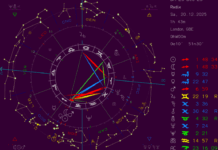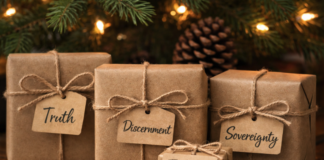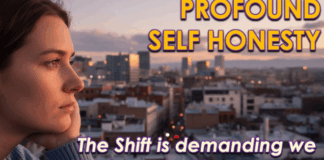I was not able to provide the photos that accompanied this article but the content is still hopefully educational….
How can you discern in this age of misinformation if the images you’re seeing are real or fabricated?
How can you discern in this age of misinformation if the images you’re seeing are real or fabricated?
AI-generated spots are circled in this photo. (Illustration by The Epoch Times, Unsplash)
As artificial intelligence (AI) continues to develop, it’s getting harder and harder to tell the difference between real photographs and AI-generated images.
AI can create everything from stunning landscapes to lifelike portraits in a matter of moments—and at first glance, they may appear perfectly legitimate.
How can you discern in this age of misinformation if the images you’re seeing are real or fabricated?
Fortunately, there are subtle clues that can help us tell the difference, including inconsistencies in texture, anomalies in human features, and garbled writing. By understanding these telltale signs, you can better navigate digital information and assess the authenticity of the images you encounter.
1. Unnatural Hands and Limbs
Hands and limbs are surprisingly complex structures, and AI often struggles to accurately replicate them. Look for extra, oddly shaped, or misaligned fingers. They also might have incorrect proportions or be presented with unnatural positioning.
In the above image, the children’s hands and feet look unnatural, with misshapen fingers and toes as well as misaligned sandal straps.
2. Discrepancies in Details
If you’re uncertain if a candid crowd photo is legitimate, take a look at the small details.
Background faces are often blurred or have indistinct features that lack clear definition.
AI has difficulty rendering small details, so you might also see objects and elements being subtly merged together in unnatural ways. These imperfections occur because AI relies on pattern recognition, which can fail when handling intricate or nuanced details.
In this AI-generated image, the man in the water has a blurry face and fingerless hands, while the young man on shore has a transparent leg that appears to merge into the background.
3. Overly Perfect Skin
Having an overly smooth face with very little texture is a sign of an AI generated photo. It can make the person appear almost cartoonish because it lacks imperfections or natural texture.
In the above images, the girl on the left has overly smooth skin and hair that merges with her collar. The boy on the right also has overly smooth skin.
4. Misalignments
AI can struggle with alignments, resulting in a disjointed or incoherent appearance because elements don’t align properly.
Objects may overlap in unnatural ways that defy spatial coherence.
Zoom in to spot inconsistencies, such as in the above image, where the lines of the wicker cut through the picnic items. The texture lines on the woven picnic basket and tray are misaligned.
5. Inconsistencies and Asymmetries in Small Details
You will likely be able to spot inconsistencies in small details, such as glasses with mismatched lenses or frames.
The following examples of AI generated images from ThisPersonDoesNotExist.com look realistic at first glance, but upon closer inspection, it’s possible to detect the defects.
For the image on the left, the earrings don’t match, and the hair at the bottom right abruptly stops and blends with the background.
In the center image, the shirt in the bottom left corner blends in with the background.
In the image on the far right, the endpieces of the glasses don’t match.6. Garbled Writing
AI-generated images often produce garbled or nonsensical text, with letters and words jumbled.
Take a close look at any writing or logos in the image to see if they are difficult to read or completely incoherent.
This AI-generated image shows traffic on a busy street. When looking closely at the text on the roadside billboard, we can see that it’s incoherent.
7. Illogical Context
Does the image depict a likely event? If the object seems misplaced in its environment, illogical, preposterous, or stretching the imagination in any way, then it might be artificially constructed.
The above image of a person holding a cat while riding a camel is a good example, as such activity on an urban street is an unlikely scenario.
8. Blurry Backgrounds
It’s made up entirely of light and textures, and may look similar to what you might find staged in a photo studio or in photos taken with an extremely low aperture.
However, a real photograph taken with low aperture has a more gradual transition between what is blurry and what’s in focus, whereas AI-generated images have a sharp distinction between the two.
In this AI generated image, there is no transition from blurry to sharp neither from foreground to subject, nor from subject to background.
In this real photograph, we can see in the background behind the girl a more gradual transition from blurry tulips to a very blurry landscape.
9. Scrutinize the Original Post
Google Search and Tineye are useful tools for this. If the original image was featured in a post, then comments, tags, or captions may identify it as an AI-generated image.
To use Google’s reverse image search on your computer, go to images.google.com. Open Google Lens by clicking on the camera icon. You can upload the image in three different ways: Paste the image link, upload the photo from your hard drive, or drag it from a separate browser window.
The example above shows an altered image of Secret Service agents protecting former President Donald Trump after an assassination attempt on him at his campaign rally in Butler, Pennsylvania, on July 13. The agents surrounding Trump are smiling, which seems to be an unlikely reaction given the situation. A search for the image using the Google Image Search browsing tool results in multiple websites that use photos similar to this one. From the titles and content of other web sources, it’s easy to recognize this image as a viral fake image, while the original photo shows that the agents had a solemn facial expression.
To use Google Lens on your smartphone, simply open it with the camera icon. It will prompt you to either point at the object with your camera or access an image from your camera roll.
You will not be able to paste the image’s URL on your mobile device. To do that on Safari on iOS, go to Google.com and tap the aA icon. Clicking on the Request Desktop Site will load the desktop version, where you can enter a URL or upload saved images.
To do that on Chrome on a mobile device, go to Google.com and tap the three-dot menu, then scroll down the menu to select Request Desktop Site to load the desktop version.
10. Use AI Detectors
Beat AI at its own game by using AI detectors. These tools analyze various aspects of an image, such as pixel patterns, inconsistencies, and digital artifacts that may not be immediately visible to the human eye.
Some detectors focus on identifying specific digital signatures or metadata that reveal the use of AI tools. Others employ forensic techniques to detect inconsistencies in lighting, textures, or patterns.
Fortunately, these AI detection tools are developed alongside AI technology, so they can keep pace as AI images become more sophisticated.
Some AI detectors include:GoWinston.ai
AIOrNot.com
ContentAtScale.ai/ai-image-detector
App.Illuminarty.ai
IsItAI.com/ai-image-detector
Disclaimer: We at Prepare for Change (PFC) bring you information that is not offered by the mainstream news, and therefore may seem controversial. The opinions, views, statements, and/or information we present are not necessarily promoted, endorsed, espoused, or agreed to by Prepare for Change, its leadership Council, members, those who work with PFC, or those who read its content. However, they are hopefully provocative. Please use discernment! Use logical thinking, your own intuition and your own connection with Source, Spirit and Natural Laws to help you determine what is true and what is not. By sharing information and seeding dialogue, it is our goal to raise consciousness and awareness of higher truths to free us from enslavement of the matrix in this material realm.
 EN
EN FR
FR


























